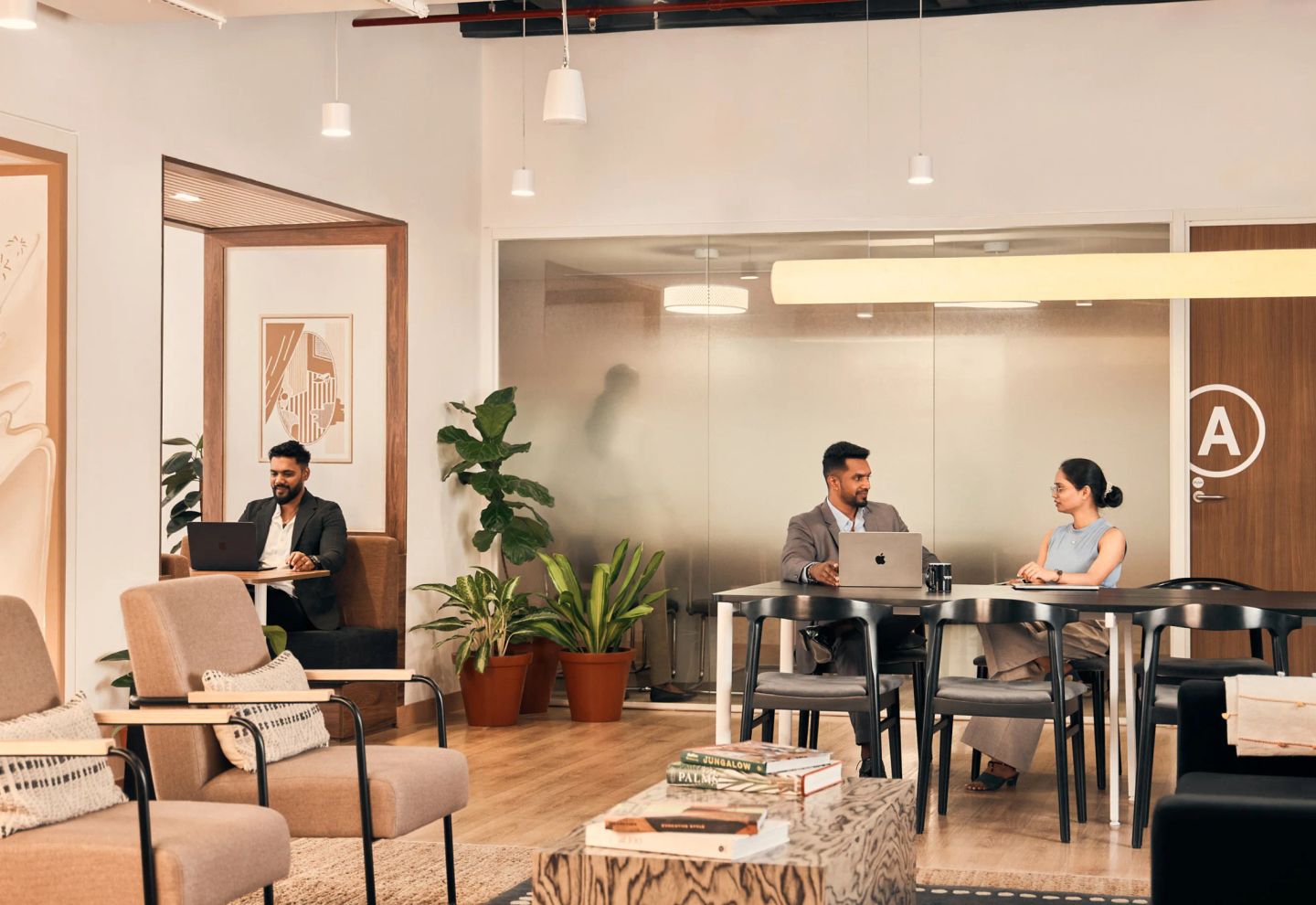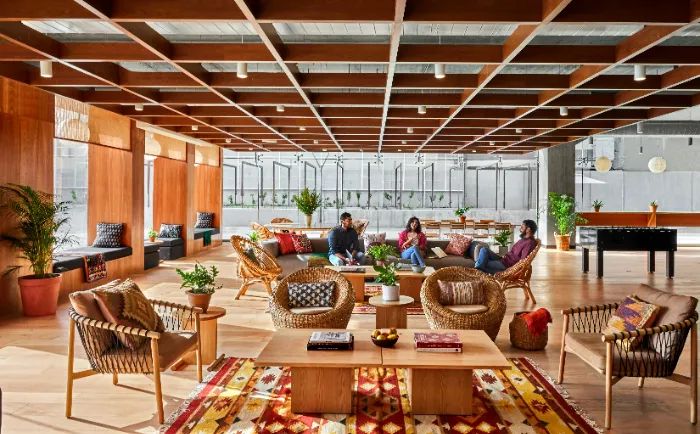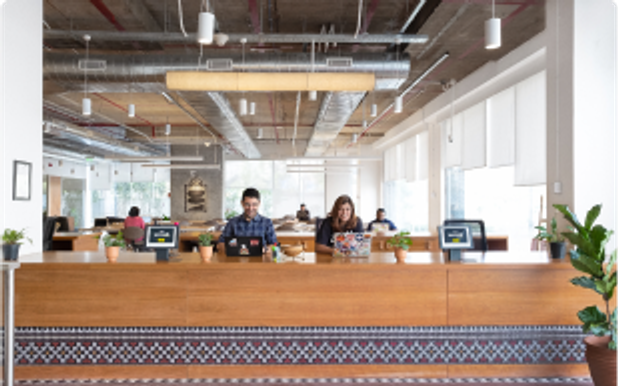WORKSPACE SOLUTIONS
Ideal Office Seating Arrangement for a Hybrid Workplace

Discover the best office seating arrangements for a hybrid workplace. Learn how to optimize space, boost collaboration, and enhance employee productivity.
The secret to maximising the potential of your team may lie in a thoughtfully planned office seating arrangement. It greatly affects office dynamics, employee satisfaction, and productivity. Find the best way to arrange your workspace to accommodate different tastes, encouraging teamwork and providing solitude when needed. Let this article guide you through creating the ideal office seating arrangement for improved work efficiency.
What's a hybrid workplace?
A hybrid workplace combines remote and in-person work environments. While some workers might attend the office daily, others might only do so a few times a week. With this flexibility, not every employee will find the standard fixed-desk arrangement suitable. To make sure that every employee feels calm and productive at the workplace, businesses need to be flexible enough to accommodate new workplace seating arrangements.
Also read: Benefits of a flexible workplace
What are the different types of office seating arrangements?
There are various types of seating arrangements for office spaces and each has its benefits. Businesses can choose a seating arrangement depending on the company’s work style.
1. Assigned seating
Assigned seating means every employee has their own desk. This setup works well for companies where employees need specific equipment or personal workspaces. It helps employees feel a sense of belonging and stability.
2. Hot desking
In a hot desking setup, employees do not have assigned seats. Instead, they choose any available desk when they come to the office. This system allows for flexibility and makes better use of space. However, it may not work well for employees who prefer a consistent workspace.
3. Team-based seating
Some companies arrange desks based on teams. This means employees who work together sit close to each other, making communication easier. It helps teams collaborate better but may not be ideal for those who need a quiet space to focus.
4. Activity-based seating
Activity-based seating gives employees different areas for different tasks. There are quiet zones for focused work, collaborative areas for group projects, and social spaces for casual meetings. This setup supports various work styles and encourages movement within the office.
5. Hybrid seating
This flexible seating arrangement blends activity-based workstations, hot desking, and assigned seats. Depending on their daily requirements, employees can choose their workspace. Businesses that wish to support both individual and group work will find hybrid seating to be effective.
Key factors to consider for office seating arrangements
When designing an office seating arrangement, companies need to consider several factors to ensure comfort and efficiency-
1. Employee comfort
A comfortable seating arrangement improves productivity and health. Companies should invest in ergonomic chairs and desks to prevent back and neck pain. Adjustable desks and chairs help employees find the best position for their work.
2. Collaboration and communication
The seating arrangement for office spaces should encourage communication among employees. Open spaces make teamwork easier, while quiet zones help those who need concentration.
3. Technology support
Hybrid workplaces need strong technology support. Desks should have easy access to power outlets, high-speed internet, and video conferencing tools to support remote collaboration.
4. Space utilisation
Office space should be used efficiently. Companies can create flexible seating plans that allow different teams to use the same areas at different times. This reduces wasted space and improves the office environment.
5. Employee preferences
Employees have different working styles. Some prefer quiet areas, while others work best in lively spaces. A good seating plan gives employees options to choose the best spot for their work.
Also Read: Hybrid work model
Conclusion
For a hybrid workplace to work well, office seating should be practical, flexible, comfortable, and supportive of both individual and teamwork. WeWork’s flexible workspaces offer adjustable seating, ergonomic furniture, and technology support, making them a great choice for those needing a flexible office space. A work environment that fosters collaboration, productivity, and employee satisfaction ultimately leads to a more successful and thriving workplace.
Also read: Choosing the right WeWork membership: All Access Plus vs. All Access Pay Per Use
FAQs
1. What is the best office seating arrangement for a hybrid workplace?The best seating arrangement depends on the business needs. Hot desking and activity-based seating arrangements would be ideal for a hybrid workplace, offering maximum convenience and productivity.
2. How does office seating improve productivity?When employees are provided with comfortable and well-organised seating arrangements it gradually helps reduce distractions and support collaboration, leading to higher productivity.
3. What factors should be considered when designing an office seating arrangement?Employee comfort, collaboration needs, space efficiency, technology support, and personal work preferences are some of the important aspects to be considered when designing an office seating plan.
4. Why is ergonomic seating important in a modern office space?Ergonomic furniture is an excellent choice for a comfortable office space. This type of seating prevents discomfort, reduces health risks, and helps employees stay productive throughout the day.
Related Blogs:

WORKSPACE SOLUTIONS
A workspace is not just about the work. It is also about providing employees a space that allows them the freedom to work where, when, and how they want. Flexibility...

WORKSPACE SOLUTIONS
Businesses should grow smart, not just big. Today, when every business looks forward to expanding its operations or network

